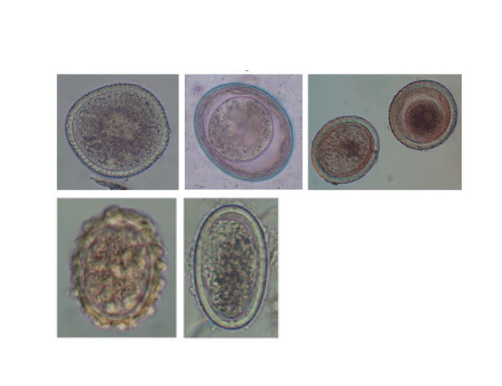ASCARIDS
Ascarids, Parascaris equorum, the horse roundworm, is a very large (females may be up to 15 inches long), yellowish white parasite that may pass out in the feces of foals and young horses. Typically, adult horses develop an immunity to this parasite; therefore, roundworms primarily infect young horses less than 2 years of age.
The life cycle of the roundworm starts when the susceptible horse consumes grass, feed, or water contaminated with the infective eggs. The eggs hatch larvae that burrow into the small intestines, migrating through veins to the liver, heart, and eventually the lungs. After migrating in the air spaces of the lungs, the parasite larvae are coughed up and swallowed. The roundworm larvae are returned to the small intestine, where they mature to egg-producing adults, completing the life cycle. The life cycle takes about three months.
Physical damage, such as inflammation and scarring of liver and lung tissue, occur in the horse during migration. Adult roundworms can cause physical damage due to intestinal blockage or intestinal rupture. The damage ranges from mild digestive upset and lower feed absorption to severe colic.

Clinical signs of ascarid infection may include unthriftiness, potbelly, rough hair coat, and slow growth. Some young horses develop nasal discharge accompanied by a cough as a result of larvae migration.


